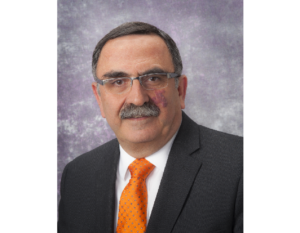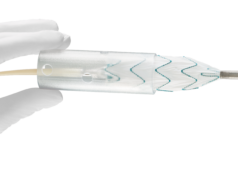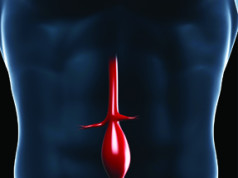Five-year data from the INSPIRATION US investigational device exception (IDE) pivotal trial confirms favourable safety and effectiveness of the INCRAFT device. Presenting the trial at the Society of Vascular Surgery (SVS) Vascular Annual Meeting (VAM; 12–15 June, National Harbor, USA), Michel Makaroun, University of Pittsburgh (Pennsylvania, USA) surmised that the INCRAFT device “offers unique benefits in patients with challenging access anatomy”, while it “may provide a useful option for patients with infrarenal abdominal aortic aneurysms”.

“The one-year results were presented here at SVS four years ago,” announced Makaroun. “Now, all the five-year visits have been completed, with the follow-up visit compliance at 93%, and the follow-up imaging at 84% compliance.”
The safety and efficacy endpoints were both met. Specifically, Makaroun acknowledged that major adverse events through 30 days were noted in six patients (3.2%; 95% CI, 0–6.1%) and successful aneurysm treatment at one year was achieved in 87.9% (95% CI, 83–100%). Pointing to the Kaplan-Meier plot depicting aneurysm-related and all-cause mortality, Makaroun said, “Freedom from mortality at five years is around 73%, [while] aneurysm-related mortality is extremely low [one patient; 0.5%].”
In terms of the abdominal aortic aneurysm sacs, he added, “The diameter changes are somewhat standard, except for the slightly higher rate of enlarged aneurysms at five years [23.4%]. Forty-two per cent had a shrinkage of more than 5mm and 35% were stable over the period of observation.”
Next, Makaroun alluded to a table detailing the endoleak grades over one, three and five years. He said that the vast majority of endoleaks were type II, and at all time periods they were present in about a third of the patients.
“The main reason that the device was delayed,” acknowledged Makaroun, “as it is probably the first device that has been approved after four years of follow-up—was that some early stent fractures were observed in the suprarenal stent. Overtime, the core laboratory identified stent fractures mostly in the suprarenal stent in 20 patients (18.9%) through five years with only one identified by the site.”
Of note, he added, “You have probably heard that the core lab was switched after a year; all of the fractures were actually discovered by the second core lab. The first one had not identified the same fractures that the second core lab identified.”
Further, he confirmed that the Kaplan-Meier estimate of the number of fractures overtime was around 15% at five-years. According to Makaroun, no migrations at the proximal neck occurred in any patient. Limb occlusions were reported in 11 patients (5.8%) through five-year follow-up, with seven occurring in the first year (3.7% of 190 implanted). He also noted that the only two open surgical conversions were related to occlusions, both of which also occurred in the first year, due to mural thrombus deposition with embolisation and main body occlusion.
The INCRAFT INSPIRATION regulatory trial enrolled 190 (mean age: 74; 90% male) patients in total; 134 at 27 sites in the USA and a further 56 patients at five sites in Japan. After the enrolment period (July 2012–August 2013), patients were followed with contrast enhanced CT scans and X-ray’s at one, six and 12 months, and annually through five years. Regarding the patient population, Makaroun remarked, “the only unusual thing was that nearly half the patients had an iliac artery diameter of <7mm bilaterally [83/187 patients].”
Updating the SVS audience on the INCRAFT stent graft system, Makaroun explained the design of the modular tri-fab system. Encased within a polyester graft fabric, the system is comprised of electro-polished nitinol stents and active suprarenal fixation barbs. He added that the limbs are flexible, with 2–3cm in-situ length adjustment options that will allow you to provide accurate distal landing.
“They have a limited number of parts, only 23, with four main body diameters and five iliac limb diameters. The profile is a very low profile, at 14F, except for the 34 main body that is a 16F device.” Pointing to an array of photographs of the graft within the anatomy, Makaroun highlighted, “The system is very flexible […], it can navigate some very tortuous anatomy without getting into trouble… without necessarily straightening up the anatomy too much. The system is very accurate and allows for a slow, deliberate and accurate deployment in a proximal site.”
According to Makaroun, INCRAFT has been marketed worldwide outside of the USA since 2014. Yet, with the device now approved by the FDA since 2018, he said that it is soon to be marketed in the USA also.













